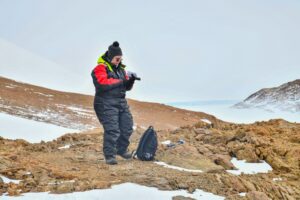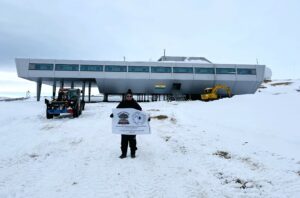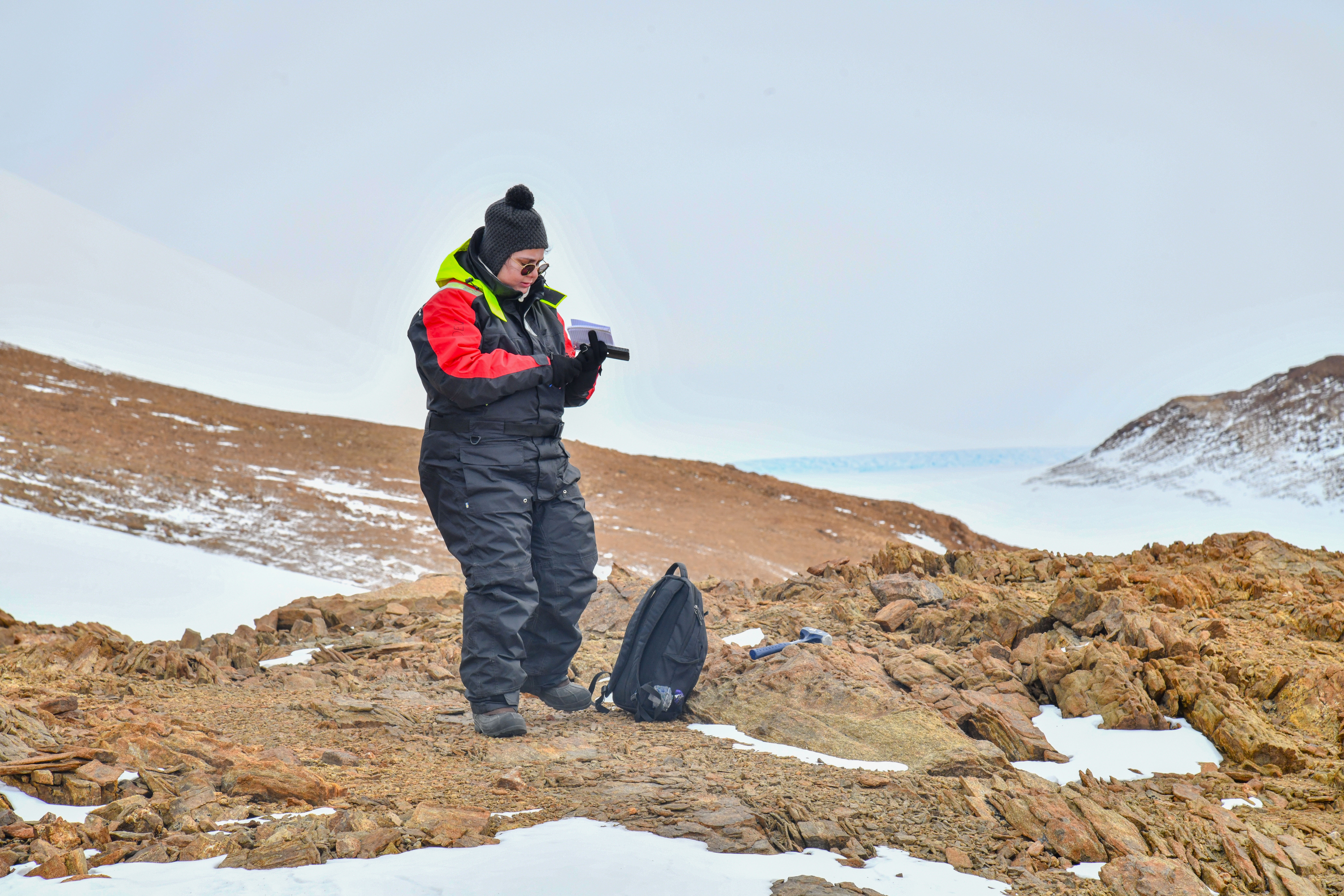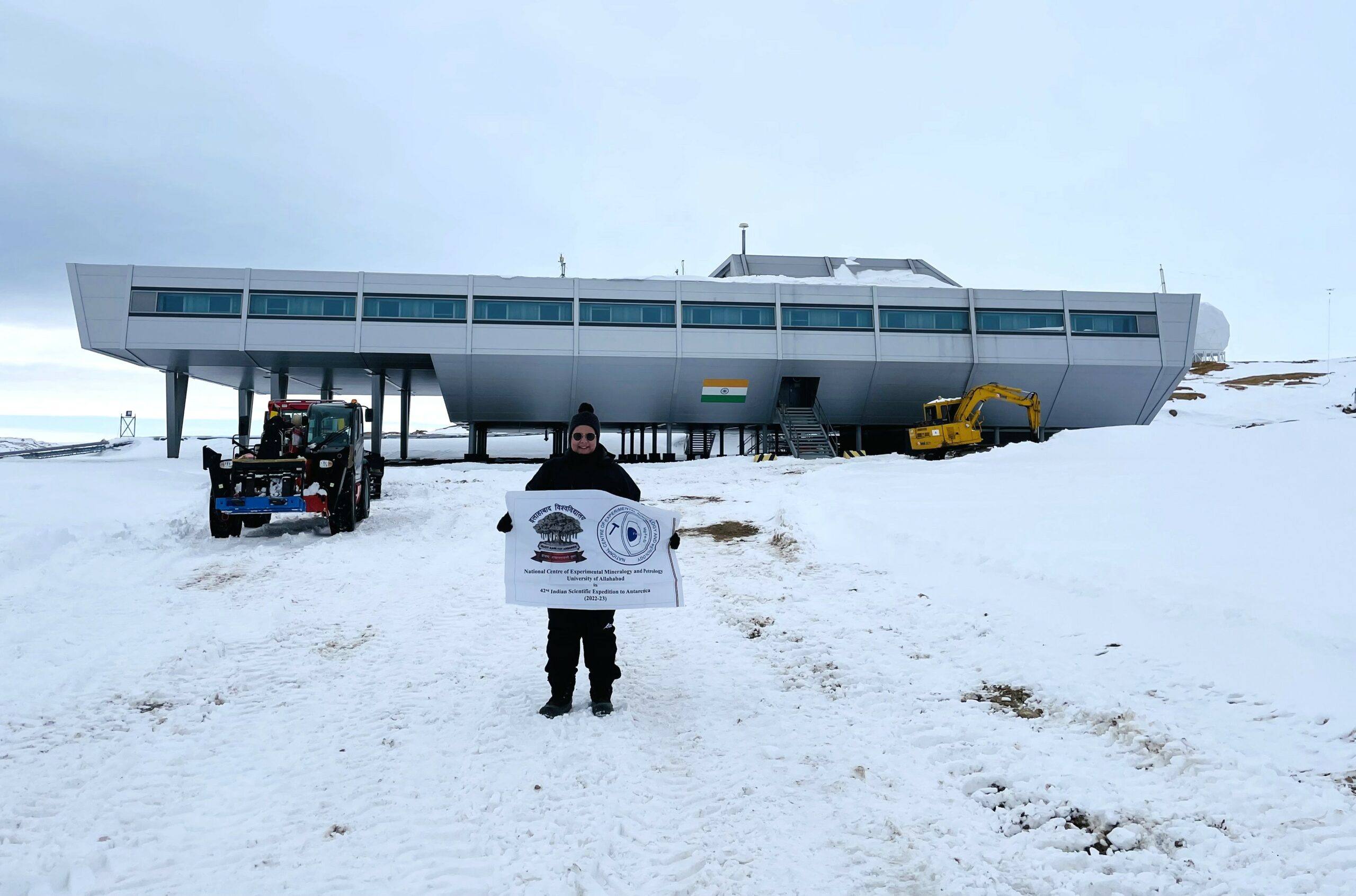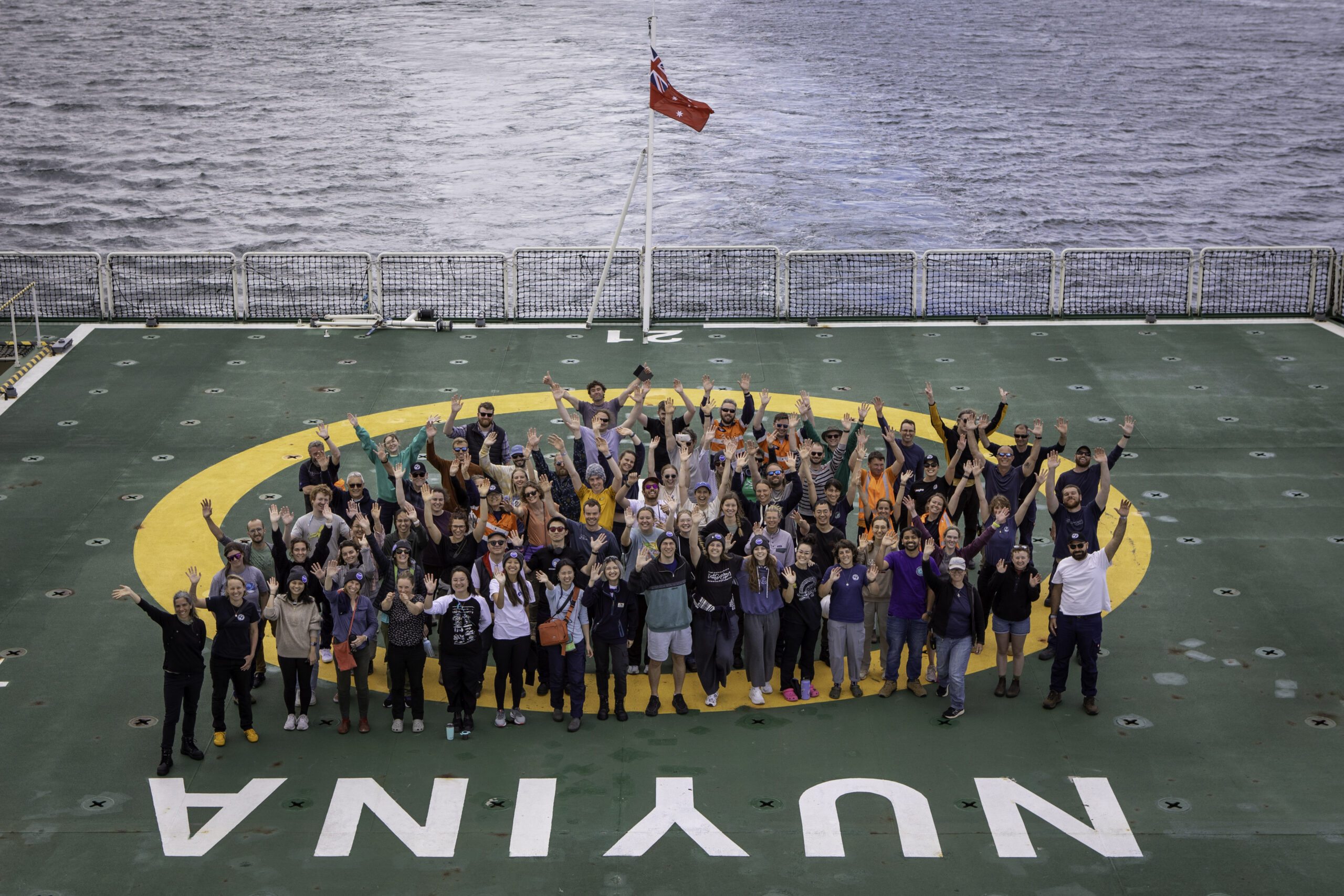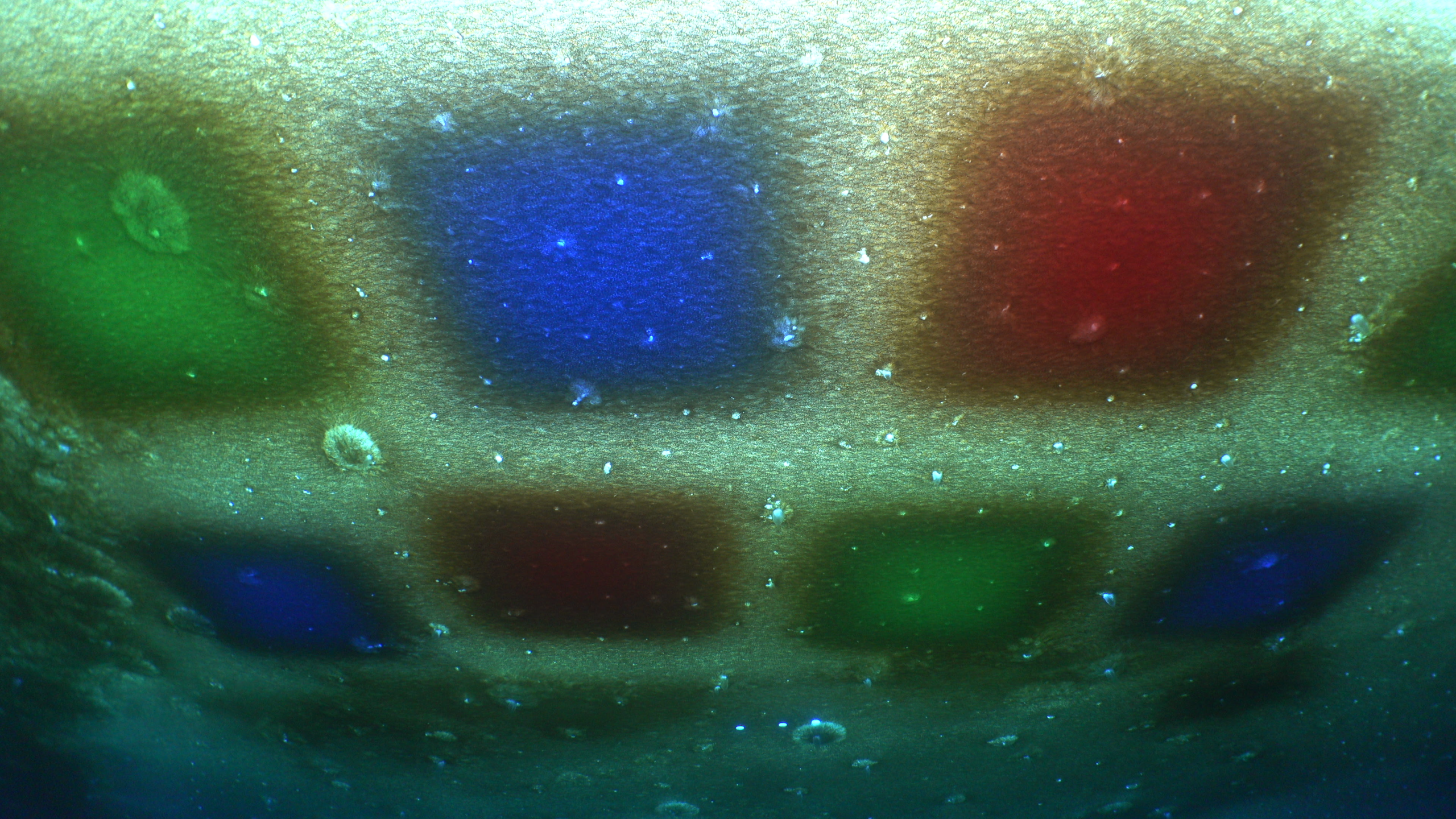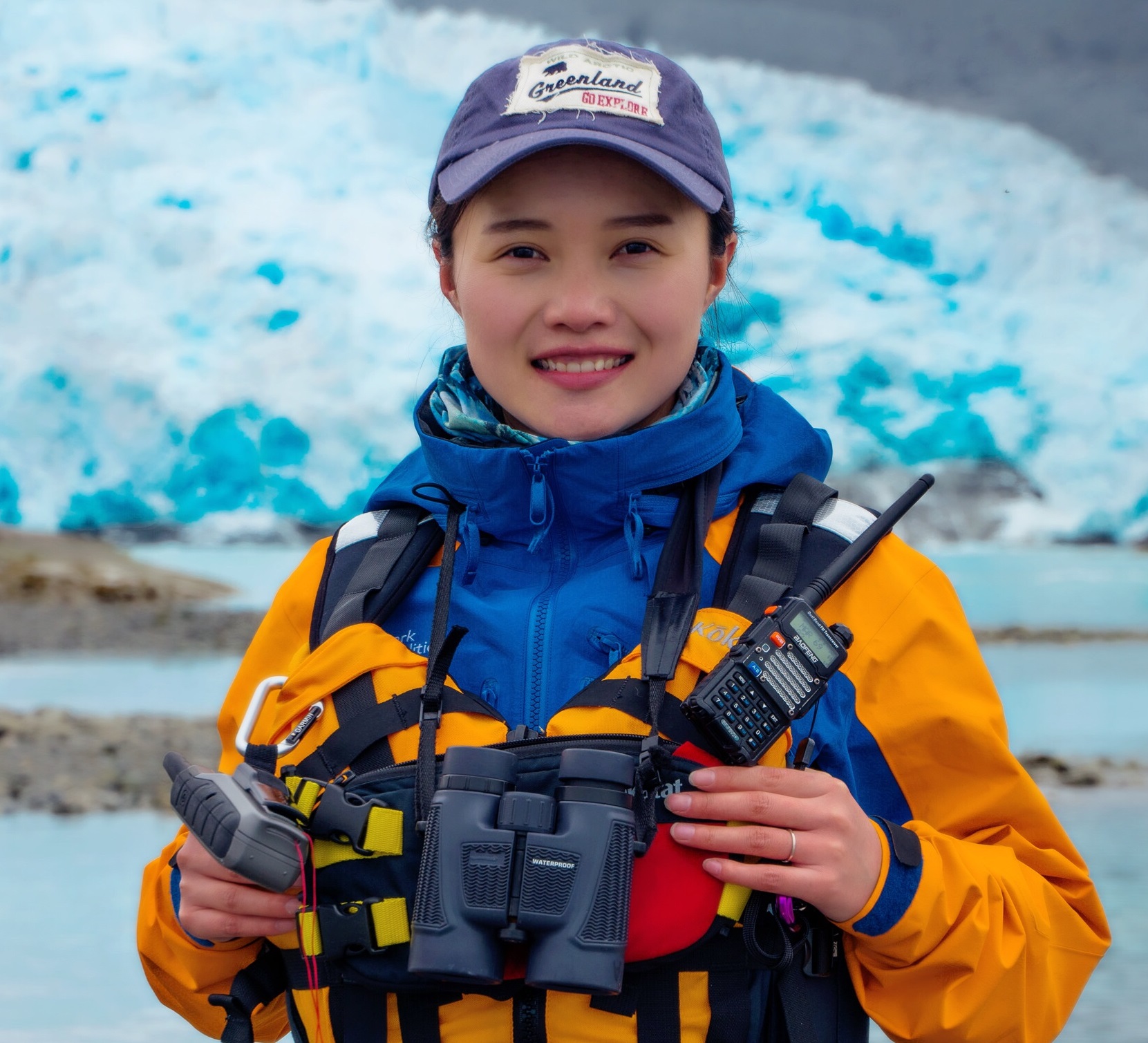Introducing Dr Devsamridhi Arora
ACEAS researchers recently welcomed a special guest from India’s Antarctic science community. Dr Devsamridhi Arora was here at IMAS/UTAS, Hobart from the University of Allahabad in Prayagraj, Uttar Pradesh, as a visiting 2025 SCAR INSTANT Fellow. Her collaborative project is entitled ‘Integrating sub-ice geological heterogeneity into Geothermal Heat Flow: A Case Study of Princess Elizabeth Land sector, East Antarctica.’
We caught up with Dr Arora to learn more.
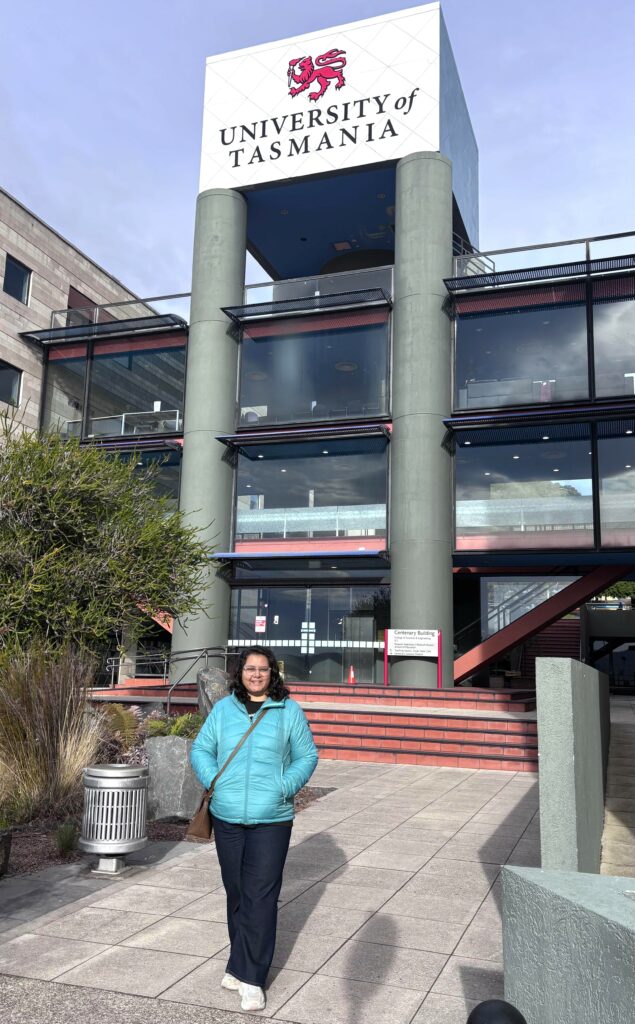
of Allahabad, India.
Dr Arora, thank you for speaking with us. Can you please introduce yourself and your area of expertise?
I am Devsamridhi Arora, an Assistant Professor at the University of Allahabad (a central university in India) and a geologist by profession. My research focusses on investigating Ultra-High Temperature (UHT) granulites from both India and Antarctica. A significant part of my work also involves exploring the hidden sub-ice geology of Antarctica, which is not only scientifically fascinating but also critical for understanding the continent’s geological evolution and its role in global geodynamics.
What brought you to ACEAS and Tasmania?
I came to the University of Tasmania (UTAS) to collaborate with Dr. Tobias Stål on a cutting-edge Antarctic research project. This visit was made possible through a prestigious Early Career Fellowship worth USD 7500 awarded by SCAR-INSTANT (The INStabilities & Thresholds in ANTarctica (INSTANT) Scientific Research Programme of Scientific Committee on Antarctic Research (SCAR)). It was an exciting opportunity to connect with Antarctic geophysicists at UTAS.
What did you focus on while you were here?
During my time at UTAS, my focus was on integrating existing geological datasets with modelled Geothermal Heat Flow (GHF) across Antarctica. The ultimate goal is to contribute toward a geology-driven GHF map of the continent, which can significantly enhance our understanding of how geological structures influence the Antarctic ice sheet from beneath.
What is your focus now with the collaboration and connections you made, looking forward?
Collaborating with Dr. Stål was an incredible learning experience—his deep understanding of Antarctica’s geothermal framework, including his own heat flow models, added immense value to our work. Currently, I am in the process of preparing publications based on the outcomes of our research. Looking ahead, I am very keen to continue this collaboration and develop new joint projects focused on Antarctic geology.
What motivates you with your research?
What excites me most is the mystery of Antarctica’s buried geology. The idea that vast geological structures lie hidden beneath kilometres of ice and the challenge of understanding how they interact with the overlying ice sheet, is what fuels my curiosity and passion for this work. There is still so much that we do not know, and that sense of the unknown is a strong driver for my research.
What did you enjoy or what surprised you during your visit?
Tasmania truly captivated me with its natural beauty. The beauty of Bruny Island and the panoramic views from Mt. Wellington was breathtaking. I also enjoyed the vibrant Saturday Salamanca market; it was full of local charm. A standout experience was attending the Dark MOFO Festival. I was fascinated by its bold and unique concept.
On the professional side, I thoroughly enjoyed the intellectually stimulating discussions with Dr Tobias Stål, Prof. Anya Reading, Dr Jacqueline Halpin, and Dr Jodi Fox. Their insights were incredibly valuable. I am optimistic about fostering stronger India–Australia collaborations in Antarctic science and look forward to more opportunities like this in the future.
—
